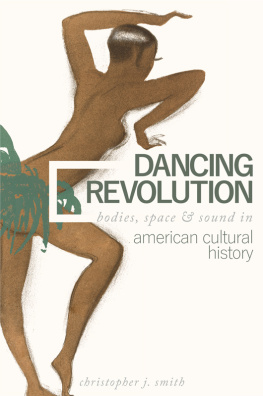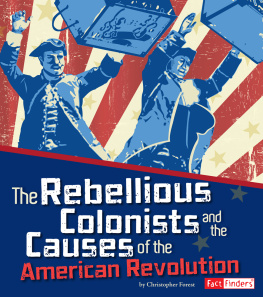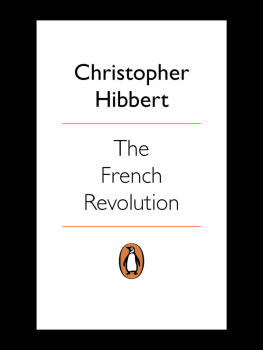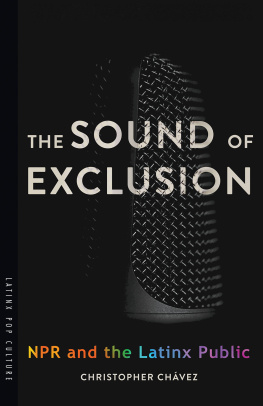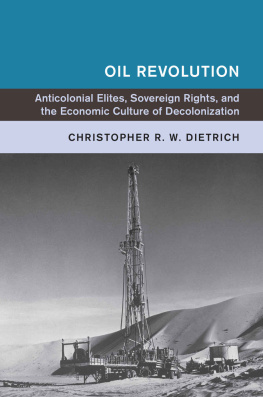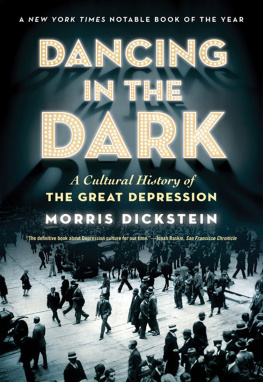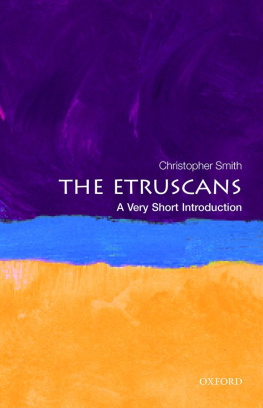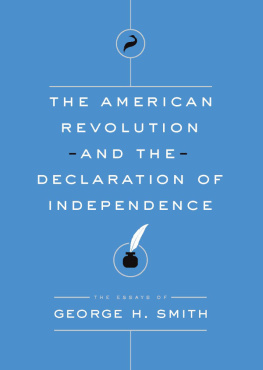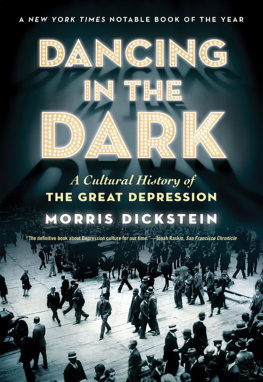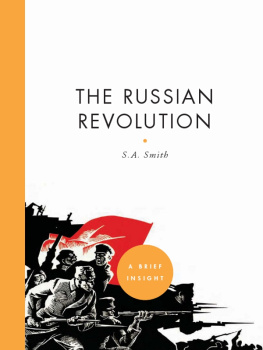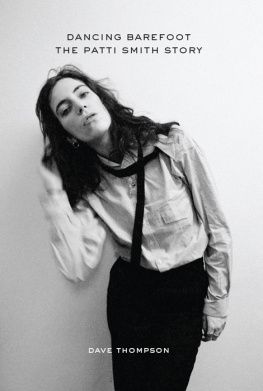Christopher J. Smith - Dancing Revolution: Bodies, Space, and Sound in American Cultural History
Here you can read online Christopher J. Smith - Dancing Revolution: Bodies, Space, and Sound in American Cultural History full text of the book (entire story) in english for free. Download pdf and epub, get meaning, cover and reviews about this ebook. year: 2019, publisher: University of Illinois Press, genre: Romance novel. Description of the work, (preface) as well as reviews are available. Best literature library LitArk.com created for fans of good reading and offers a wide selection of genres:
Romance novel
Science fiction
Adventure
Detective
Science
History
Home and family
Prose
Art
Politics
Computer
Non-fiction
Religion
Business
Children
Humor
Choose a favorite category and find really read worthwhile books. Enjoy immersion in the world of imagination, feel the emotions of the characters or learn something new for yourself, make an fascinating discovery.
- Book:Dancing Revolution: Bodies, Space, and Sound in American Cultural History
- Author:
- Publisher:University of Illinois Press
- Genre:
- Year:2019
- Rating:5 / 5
- Favourites:Add to favourites
- Your mark:
- 100
- 1
- 2
- 3
- 4
- 5
Dancing Revolution: Bodies, Space, and Sound in American Cultural History: summary, description and annotation
We offer to read an annotation, description, summary or preface (depends on what the author of the book "Dancing Revolution: Bodies, Space, and Sound in American Cultural History" wrote himself). If you haven't found the necessary information about the book — write in the comments, we will try to find it.
Dancing Revolution: Bodies, Space, and Sound in American Cultural History — read online for free the complete book (whole text) full work
Below is the text of the book, divided by pages. System saving the place of the last page read, allows you to conveniently read the book "Dancing Revolution: Bodies, Space, and Sound in American Cultural History" online for free, without having to search again every time where you left off. Put a bookmark, and you can go to the page where you finished reading at any time.
Font size:
Interval:
Bookmark:

Dancing Revolution
MUSIC IN AMERICAN LIFE
A list of books in the series appears at the end of this book.
DANCING
REVOLUTION
Bodies, Space, and Sound
in American Cultural History
CHRISTOPHER J. SMITH

Publication of this book was supported by a grant from the H. Earle
Johnson Fund of the Society for American Music.
2019 by the Board of Trustees
of the University of Illinois
All rights reserved
Library of Congress Cataloging-in-Publication Data
Names: Smith, Christopher J. (Christopher John), 1959 author.
Title: Dancing revolution: bodies, space, and sound in American cultural history / Christopher J. Smith.
Description: Urbana: University of Illinois Press, 2019. | Series: Music in American life | Includes bibliographical references and index. |
Identifiers: LCCN 2018059613 (print) | LCCN 2019013274 (ebook) | ISBN 9780252051234 (ebook) | ISBN 9780252042393 (hardback) | ISBN 9780252084188 (paper)
Subjects: LCSH: DanceUnited StatesHistory. | DanceSocial aspectsUnited StatesHistory. | Popular cultureUnited StatesHistory. | BISAC: MUSIC / Ethnomusicology. | SOCIAL SCIENCE / Ethnic Studies / African American Studies.
Classification: LCC GV1623 (ebook) | LCC GV1623 .S65 2019 (print) | DDC 792.80973dc23
LC record available at https://lccn.loc.gov/2018059613
Cover illustration: Paul Colin, Josephine Baker , 1927
( 2019 Artists Rights Society (ARS), New York / ADAGP, Paris).
Dedicated to Angela Mariani
I am profoundly grateful for the opportunity to write this book. I thank all the people, events, experiences, and processes that have made it possible.
It may seem curious that a person such as myself, trained as an instrumental musician and a historian, should choose to write about dance and semiotic meaningespecially in light of the fact that dance is something at which I am much more adept as witness than participant! Coffeehouse (Cambridge). I have been a political activist (at first nascent, later conscious, but always engaged) ever since my mother (Bobby Smith Thomas, RIP) took me and my siblings to hear Dr. King speak in Lynn, Massachusetts, around 1964.
That I found my way to the worlds of vernacular expressive experienceas player, dance-sympathizer, scholar, teacher, and advocateis the most significant artistic, emotional, psychological, political, and ethical event in my life. Without vernacular cultures capacity to build communityits ability, as Bob Dylan said, to teach you everything you need to know about life, if you let itgenetics, experience, biography, and psychology suggest that I would probably be dead or addicted. Hence, these art forms, and the human relationships and experiences they made possible, without hyperbole saved my life.
Its important to me to give back to them.
In the existing literature regarding the phenomenon of westerners (specifically North Americans) taking on the music and dancing of the exotic Otherthe theft, for example, of the blackface minstrel maska number of explanations are tendered for these genres attraction to members of the dominant culture, including cultural exoticism. But, among these analyses of cross-class appropriation, notable for its relative de-emphasis is the idea that subaltern genres might also have appeal because engaging in them elicits a fundamental sanity, connect-edness, integration (versus alienation), efficacy: in short, an enhanced experience of self-ness, humanity, and community. Participation in such experiences (as performer or audience and in the richly ambiguous place between those two roles) serves deep-seated human desires and need. This is precisely my motivation for promulgating these art forms: because that connection, integration, self-ness, wasmost emphatically, in the formation of my professional, pedagogical, and ethical identitymy own experience.
Expressive culture, including especially participatory expressive culture (music and dance), is a tool, whose form or name or details of construction may be beautifully unique to each cultural context from which it emerged, but whose functions tend, across cultures, contexts, and epochs, to serve a consistent network of fundamental cognitive, experiential, psychological, and emotional human needs. Sometimes outsiders seek participation not in order to aggrandize or mythologize themselves but because they believe that participation can teach better ways to be: Ted Solis asks simply Is there room for a space for critical and sensual involvement that doesnt reproduce exoticist voyeurism? This book seeks to create such a space.
Sincerest thanks are due to:
My brothers, sisters, avatars, and teachers in the worldwide communities of dance musicians: Chipper Thompson, Mason Brown, Steve Cooper, Grey Larsen, Randal Bays, Martin Grosswendt, Andrew Lazaro, Grant Manhart, John White, Heather Maxwell, John Perrin, Larry Guitar Baeder, Mike Bevan, Dean Magraw, Dominic Spera, and the great David N. Baker;
My role models for writing about vernacular culture: Peter Guralnick, Gearoid O hAllmhurain, Ciarn Carson, Eric von Schmidt, Gary Snyder, and Henry Glassie;
The seminal dance and performance scholars Iremarkablyencountered by chance, just when I needed to: Richard Schechner, Anya Peterson Royce, and Richard Bauman; and
My champions Laurie Matheson (Director) and Julianne Laut (Outreach & Development Acquisitions Assistant) of the University of Illinois Press.
As well, I thank my scholarly colleagues in the linked fields of American vernacular musics, dance, and cultural history;
At my home institution, I thank my boss, William Ballenger, Director of the Texas Tech University School of Music; Keith Dye, Associate Dean of the TTU College of Visual and Performing Arts and subsequent Director of the School of Music; Dr. Bill Gelber of the School of Theatre and Dance, Brecht scholar, and admired artistic ally; my Musicology colleagues, Lauryn Salazar, Thomas Cimarusti, Stacey Jocoy, and Sarai Brinker; also
My colleague and musical brother-in-arms, Roger Landes: thanks for inviting me to that first Zoukfest, Rog!
My great friend, the master image-researcher, Rich Remsberg, for irreplaceable assistance and stimulating discourseand for the art program!
The student participants in my seminars and other projects at Texas Tech University since 2000;
My teaching and research assistants at Texas Tech, including most notably the Vernacular Music Center crew during the time this book was being written: Abi Rhoades, Candice Holley, Kathryn Mann, and Marusia Pola Mayorga;
The players, singers, dancers, and audiences of the Elegant Savages Orchestra, the Celtic Choir, the Eagles Heart Sisters, the Celtic Dance Corps; Caprock Morris; the Tech Irish Set-Dancers; the Mother Courage Junkyard Cabaret; the cast and creative staff of Dancing at the Crossroads ; and the Plunder! oratorio crew;
The advocacy organizations with whom I have partnered in the ongoing battle to recover the centrality of bodily experience within music: The Bay Area Country Dance Society; the Country Dance and Song Society; Comhaltas Ceoltir ireann: especially cherished friends in the County Clare chapter headquartered at Cois na hAbhna in Ennis; and,
Once again, the owners, management, and baristas of independent coffee roasters J&B Coffee, Lubbock, Texas, who continue to provide congenial, generous, engaging, and ethical environments for community and creativity.
Font size:
Interval:
Bookmark:
Similar books «Dancing Revolution: Bodies, Space, and Sound in American Cultural History»
Look at similar books to Dancing Revolution: Bodies, Space, and Sound in American Cultural History. We have selected literature similar in name and meaning in the hope of providing readers with more options to find new, interesting, not yet read works.
Discussion, reviews of the book Dancing Revolution: Bodies, Space, and Sound in American Cultural History and just readers' own opinions. Leave your comments, write what you think about the work, its meaning or the main characters. Specify what exactly you liked and what you didn't like, and why you think so.

